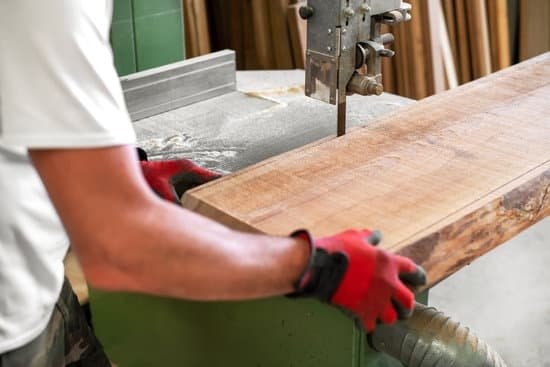Are you looking to expand your woodworking business or start a new venture? Investing in surplus woodworking machinery could be the solution you’ve been searching for. With a surplus of woodworking equipment available in the market, there are numerous benefits and opportunities for businesses and individuals looking to enhance their capabilities and increase productivity.
Surplus woodworking machinery refers to previously owned equipment that is no longer needed by its original owner. This can include everything from saws and planers to sanders and CNC machines. Because of the surplus nature of these items, they are often available at a fraction of the cost of brand new machinery, making them an attractive option for those looking to acquire high-quality equipment without breaking the bank.
Purchasing surplus woodworking machinery can bring many benefits, including cost savings, increased flexibility in production capabilities, and access to high-quality equipment at a more affordable price. Whether you are a small business just starting out or an established company seeking to upgrade its machinery, there are plenty of options available when it comes to surplus woodworking equipment.
In this article, we will explore the various types of surplus woodworking machinery available, how to evaluate their quality, where to find and purchase them, as well as maintenance tips and case studies of successful businesses utilizing surplus woodworking machinery.
The Benefits of Purchasing Surplus Woodworking Machinery
Investing in surplus woodworking machinery comes with numerous benefits for businesses and woodworkers alike. One of the primary advantages is the cost-savings that accompany purchasing used equipment.
Surplus woodworking machinery is often available at a fraction of the cost of brand-new machinery, allowing businesses to acquire high-quality tools and equipment without breaking the bank. This significant cost savings can free up capital to invest in other areas of the business, such as hiring additional skilled labor, expanding production capabilities, or investing in marketing efforts.
Additionally, purchasing surplus woodworking machinery can lead to increased efficiency and productivity. With the right equipment, woodworkers can streamline their production processes, improve output quality, and meet deadlines more effectively. This can result in a competitive edge for businesses within the industry, as they are able to deliver high-quality products in a timely manner.
Another benefit of purchasing surplus woodworking machinery is the potential for access to premium brands and models that may have been out of reach if bought new. High-end equipment can greatly enhance the precision and quality of workmanship, ultimately leading to greater customer satisfaction and loyalty.
| Benefits | Examples |
|---|---|
| Cost-savings | Purchasing a used CNC router instead of a new one can save businesses thousands of dollars. |
| Increased efficiency | Upgrading to a newer model sawmill significantly improved production output for a small woodworking shop. |
| Access to premium brands/models | An established furniture manufacturer was able to afford a top-of-the-line edge banding machine by purchasing it used. |
Common Types of Surplus Woodworking Machinery Available
When it comes to surplus woodworking machinery, there are a variety of types available for purchase. Whether you are looking to expand your current woodworking business or start a new venture, it is important to understand the common types of surplus woodworking machinery that are available on the market. Here are some of the most common types:
- Jointers: These machines are used to create a flat edge on a piece of wood, making it easier to join two pieces together.
- Planers: Planers are used to create a smooth and even surface on wooden boards, making them ideal for creating furniture and other woodworking projects.
- Saws: From table saws to band saws, there are various types of saws available as surplus woodworking machinery. Each type serves a specific purpose in cutting wood accurately and efficiently.
- Routers: Routers are essential for shaping edges and creating intricate designs on wood surfaces.
The availability of these types of surplus woodworking machinery provides great opportunities for woodworking businesses to acquire high-quality equipment at reduced costs. By understanding the functions and capabilities of each type, businesses can make informed decisions when purchasing surplus machinery.
In addition to the aforementioned types, there are also specialized machines such as CNC routers and edge banding machines that can greatly improve production efficiency and product quality in woodworking operations. Closely evaluating the needs of your business in relation to these available types will help ensure that you invest in surplus woodworking machinery that aligns with your production requirements.
How to Evaluate the Quality of Surplus Woodworking Machinery
When evaluating the quality of surplus woodworking machinery, there are several key factors to consider in order to ensure that you are getting a reliable and effective piece of equipment. One of the first things to look for is the overall condition of the machinery.
This includes checking for any signs of wear and tear, such as rust, dents, or cracks in the frame or components. Additionally, it’s important to inspect the functionality of the machine to see if all parts are working properly and if there are any noticeable issues with its performance.
Another essential aspect to evaluate is the history and maintenance record of the surplus woodworking machinery. It’s crucial to gather information about how well the equipment has been maintained by its previous owner, including any repairs or replacements that have been done on it.
This can provide valuable insight into its overall reliability and longevity. In addition, looking into the brand and model of the machinery can also give you an idea of its reputation and quality within the industry.
Furthermore, testing out the surplus woodworking machinery before making a purchase is highly recommended. This can involve running a few test pieces through the equipment to see how it performs and checking for any irregularities or malfunctions. By thoroughly evaluating these aspects, you can better assess the quality of surplus woodworking machinery and make an informed decision about whether it is a worthwhile investment for your business.
| Evaluation Criteria | Considerations |
|---|---|
| Condition | Rust, wear & tear, functionality |
| Maintenance Record | History, repairs & replacements |
| Brand & Model | Reputation within industry |
| Testing | Actual performance evaluation |
Tips for Finding and Purchasing Surplus Woodworking Machinery
When it comes to finding and purchasing surplus woodworking machinery, it’s important to approach the process strategically in order to make the most out of your investment. Whether you are just starting out in the woodworking industry or looking to expand your existing operations, purchasing surplus machinery can be a cost-effective way to acquire high-quality equipment. Here are some tips for finding and purchasing surplus woodworking machinery:
- Research and Networking: One of the best ways to find surplus woodworking machinery is by networking within the industry and doing thorough research. This can include attending industry events, joining professional networks, and reaching out to other woodworkers who may have insight into where to find surplus equipment.
- Online Marketplaces: There are numerous online marketplaces dedicated to selling used and surplus woodworking machinery. Websites such as eBay, Craigslist, and specialized industrial equipment marketplaces can be great places to start your search. Make sure to thoroughly vet sellers and inspect equipment before making any purchases.
- Auctions and Liquidations: Many businesses hold auctions or liquidations when they need to offload surplus woodworking machinery. Keep an eye out for local or regional auctions that specialize in industrial equipment. These events can provide an opportunity to snag high-quality machinery at a fraction of the cost.
It’s crucial to carefully evaluate any potential purchase of surplus woodworking machinery in order to ensure that you are getting a good deal on reliable equipment.
- Inspection: Before making a purchase, always inspect the machinery in person if possible. Look for signs of wear and tear, damage, and overall condition. If you’re not knowledgeable about woodworking machinery, consider bringing along someone with experience who can help you assess the quality of the equipment.
- History and Maintenance Records: Ask sellers for detailed information about the history of the machinery and its maintenance records. A well-maintained machine with a documented service history is more likely to be worth investing in.
- Test Run: Whenever feasible, request a test run of the equipment before finalizing your purchase. This will allow you to see firsthand how the machinery operates and identify any potential issues that may not be apparent during simply visual inspection.
By following these tips, you can increase your chances of finding high-quality surplus woodworking machinery that meets your business needs without breaking the bank.
Case Studies
Increased Production and Cost Savings
Several successful businesses within the woodworking industry have experienced significant benefits from utilizing surplus woodworking machinery. One key advantage is the ability to increase production capacity while minimizing costs. By acquiring surplus machinery at a lower price point, these businesses have been able to expand their operations without a substantial financial investment. This has allowed them to meet growing demand for their products while achieving cost savings in the process.
Improved Efficiency and Versatility
Another notable case study involves the utilization of surplus woodworking machinery to improve efficiency and versatility in manufacturing processes. With a diverse range of available equipment, businesses have been able to adapt to changing production needs and offer a wider variety of products to their customers. This flexibility has given them a competitive edge in the market, as they are able to fulfill custom orders and handle specialized projects with ease.
Enhanced Profitability and Competitive Advantage
The success stories of businesses leveraging surplus woodworking machinery also highlight the positive impact on profitability and competitive advantage. By strategically investing in quality pre-owned equipment, these enterprises have managed to reduce operational expenses, maximize output, and ultimately increase their bottom line.
Additionally, the ability to offer a faster turnaround time and maintain product quality has allowed them to outperform competitors and retain customer loyalty. As a result, these businesses have not only flourished but also set a precedent for others within the industry seeking similar benefits from surplus woodworking machinery.
Maintenance and Upkeep of Surplus Woodworking Machinery
Investing in surplus woodworking machinery can provide significant cost savings for businesses, but it’s essential to ensure that these machines are properly maintained to maximize their lifespan and performance. Proper maintenance and upkeep of surplus woodworking machinery not only prolongs their longevity but also ensures safety and efficiency in the workplace.
Regular Inspections and Cleaning
One of the crucial aspects of maintaining surplus woodworking machinery is conducting regular inspections and cleaning. This includes checking for any signs of wear and tear, lubricating moving parts, and removing any dust or debris that may have accumulated. By keeping the machinery clean and well-maintained, the risk of breakdowns or malfunctions can be minimized.
Training and Education
Proper training for employees who will be operating the surplus woodworking machinery is imperative. Ensuring that operators are knowledgeable about the equipment they are using can help prevent misuse or mishandling, which can lead to premature wear and damage. Ongoing education on best practices for operating and maintaining the machinery should be a priority for businesses utilizing surplus woodworking equipment.
Professional Service and Repairs
Inevitably, even with proper maintenance, surplus woodworking machinery may require repairs or servicing at some point. It’s crucial to have a reliable professional service provider to turn to when these needs arise. Establishing a relationship with a trusted technician or service company can ensure that any issues with the machinery are promptly addressed, minimizing downtime and preventing further damage.
By implementing a comprehensive maintenance plan for surplus woodworking machinery, businesses can not only extend the lifespan of these valuable assets but also optimize their performance, ultimately maximizing their return on investment.
The Future of Surplus Woodworking Machinery in the Industry
As the woodworking industry continues to evolve, the role of surplus woodworking machinery is becoming increasingly prominent. With advancements in technology and an ever-growing demand for quality wood products, the future of surplus woodworking machinery in the industry looks promising.
One of the key factors contributing to the growth of surplus woodworking machinery in the industry is its cost-effectiveness. Manufacturers and woodworkers are recognizing the value of purchasing used equipment at a fraction of the cost of new machinery. This not only allows businesses to save on upfront expenses, but it also provides an opportunity to invest in higher-quality machines that may have been out of reach if purchased brand new.
Furthermore, as sustainability becomes a top priority for many businesses, surplus woodworking machinery offers a sustainable solution for equipment needs. By extending the life cycle of machinery through resale and repurposing, companies can reduce their carbon footprint and contribute to a more environmentally-friendly approach to production.
In addition, with advancements in refurbishment and maintenance services, the reliability and performance of surplus woodworking machinery are continuously improving. This means that businesses can confidently invest in used equipment without compromising on productivity or quality. As a result, we can expect to see a continued rise in the demand for surplus woodworking machinery in the industry, further solidifying its role as an essential asset for businesses looking to thrive in the woodworking sector.
Conclusion
In conclusion, investing in surplus woodworking machinery can be a strategic and cost-effective choice for businesses in the woodworking industry. The benefits of purchasing surplus machinery, such as lower initial costs and potential for high-quality equipment, make it an attractive option for companies looking to expand or upgrade their production capabilities.
By carefully evaluating the quality of surplus woodworking machinery and conducting thorough research before making a purchase, businesses can make informed decisions that will ultimately contribute to their success.
Furthermore, finding and purchasing surplus woodworking machinery can be made easier by exploring various avenues such as auctions, online marketplaces, and networking with other industry professionals. By taking the time to search for the right equipment at the right price, businesses can acquire the tools they need to enhance productivity and meet customer demand.
Additionally, examining case studies of successful businesses utilizing surplus woodworking machinery can provide valuable insights and inspiration for others looking to incorporate this strategy into their operations.
As maintenance and upkeep are essential aspects of optimizing the performance of surplus woodworking machinery, companies should prioritize regular servicing and repairs to ensure longevity and efficiency. Looking ahead, the future of surplus woodworking machinery in the industry appears promising as more businesses recognize its value and potential advantages. Ultimately, investing in surplus woodworking machinery can position companies for growth and profitability while keeping overhead costs manageable.

Hi everyone! I’m a woodworker and blogger, and this is my woodworking blog. In my blog, I share tips and tricks for woodworkers of all skill levels, as well as project ideas that you can try yourself.





